What sort of work do you do?
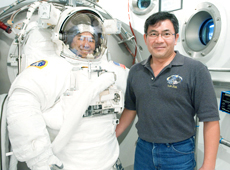
Watching NASA’s EVA training
I mainly provide the technical support for Japanese astronauts during spacewalks, also known as Extravehicular Activity, or EVA, and I am also doing research on next-generation advanced spacesuits.
What exactly do you do in supporting spacewalks?
I observe EVA training at NASA as much as possible, check with training process and safety if there’s anything that concerns me, and if necessary make a request for improvement, also that Japanese astronauts can perform accurate EVAs at the International Space Station. I also review NASA’s EVA procedures and create briefing document for JAXA internal use. Furthermore, during EVA, I need to perform the safety management by using monitor images and communications equipment.
Maintaining the safety of Japanese astronauts’ spacewalks is an important job, isn’t it?
Yes, it is. I pay particular attention to safety. For the astronauts who perform EVAs, we have to pay maximum attention to make sure they don’t push themselves too hard. We are always doing things such as checking operating procedures to look for hazards, and even if the danger is hypothetical, we call attention to it and check whether proper improvements have been made. Furthermore, I believe astronauts themselves need to evaluate their own abilities and the work as a whole, and to have the courage to abort or cancel the job if there are risks.
When were astronaut Akihiko Hoshide’s spacewalks finalized?
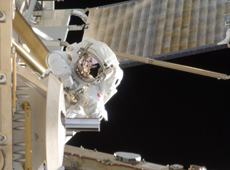
Astronaut Akihiko Hoshide conducting a spacewalk (courtesy: JAXA/NASA)
He took EVA training regularly, but I think the decision to perform one was actually made about two months before the mission. Schedules can change a week beforehand, so it’s hard to say exactly when. When the ISS was under construction, we would decide long in advance when to do EVAs and for what purpose, but the space station was completed in July 2011, and now we use EVAs to deal with equipment malfunctions outside the space station, or to replace supplies. We can anticipate to some extent things like the need to replenish supplies, but nobody can predict when something will malfunction, so we don’t know who will need to do an EVA until right before.
So that was the situation when Hoshide performed his spacewalks. Was it difficult to coordinate with NASA?
I struggled quite a bit with how to communicate JAXA’s intention to NASA thru the meeting. In addition, I check NASA’s EVA operating procedures in advance, but they are updated almost daily, so I struggled quite a bit to get my hands on information in Japan and keep it up. Fortunately I’ve known many of NASA’s EVA personnel for a long time, so they helped, and somehow I was able to deal with it.
What have you come to watch out for as a coordinator?
Not conveying JAXA’s requests unilaterally, but instead thinking about the ISS as a whole and considering priorities, then incorporating our ideas in a positive way. I’ve come to value keeping things around me in proportion. And timing my requests correctly is also important.
Face-to-face conversation, rather than email, is also important, isn’t it?
My location puts me at a disadvantage because Japan and America are far from each other, but I try to meet face-to-face as much as I can. In fact, in certain situations, I believe it’s important to look my partners in the eye and incorporate their ideas. You can tell whether you’ve asked for the impossible from the other person’s expression and such. I think when you bring a proposal to the table, it’s important to talk about it with a sense that it is good not just for yourself but also for your partner.
Did your coordination continue after Hoshide went to space?
Of course. I continued to do all sorts of work until his EVAs were finished. In addition, there are many things about an EVA you can’t know unless you actually try it. This time we only had one EVA scheduled at first, but then we had to plan a second, and then a third, because of equipment malfunctions...
Where did you watch Hoshide’s spacewalks and how did you feel watching them?
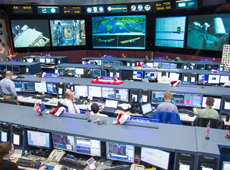
NASA Mission Control Center (courtesy: NASA)
There’s a backroom in the Mission Control Center at NASA’s Johnson Space Center. Using communications equipment and video, I monitored the EVAs from preparation to completion. While listening to the ISS astronauts and flight director talk to each other, I grasped what sort of situation it was, and if I was concerned about Hoshide’s safety, or if something odd happened, I could ask NASA about it in detail and pass the information on to Japan. Tsukuba’s KIBO control room also knows what’s happening in orbit, but if you’re not at NASA, talking to people, you don’t really know everything. That’s why I always stuck around there the whole time when Hoshide was doing an EVA. Anyway, I just watched and prayed that the EVA would completed safely and correctly.
These were Hoshide’s first spacewalks, right?
That’s right. But I think his EVA was so great that it didn’t seem like his first time. His first EVA lasted more than eight hours, and when you’re out there for so long, you have to control your breathing because you only have so much oxygen. In other words, he did his work calmly.
What was the atmosphere on-site when the spacewalk was aborted?
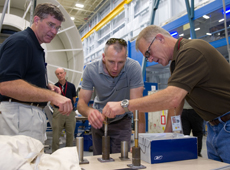
Technicians and astronauts meet to consider how to mount a bolt. (courtesy: NASA)
The atmosphere suddenly worsened. The reason was that a bolt on the replacement Main Bus Switching Unit (MBSU) wouldn’t turn properly because there was dirt in the hole, but on the ground at the time we didn’t know what was happening. Even so, the technical team on the ground anticipated the problem and considered various solutions, such as hammering it in, or somehow bending it. We also considered how much time we had if we just continued – how much battery life the spacesuit had and how much oxygen was left. We couldn’t come to any immediate conclusions, so in the end the flight director decided to abort in the middle of the EVA.
The ground staff was busy dealing with that, right?
From that point on, veteran NASA astronauts, ground technical staff, and people from the MBSU’s manufacturer got together and thought hard about a solution. Seeing that made a big impression on me. If we couldn’t use the MBSU, we wouldn’t be able to supply power to the ISS, so what we did next was hugely important. That’s why we wanted to fix it fast, any way we could.
Then, finally, ISS astronauts Williams and Hoshide were able to fasten the bolt using a solution the ground team came up with, and cheers erupted in NASA’s Mission Control Center. I think this is a true example of a success achieved by the ground and ISS crews working as one.
Hoshide’s second EVA was amazing. I think that may have built trust and led to his third EVA.

Astronaut Akihiko Hoshide (left) performing his third spacewalk, with Sunita Williams (courtesy: JAXA/NASA)
That’s exactly right. NASA also said that Hoshide and Williams would make a good team. On the third EVA, they fixed an ammonia coolant leak on a solar panel’s thermal control device. That was important for the future operation of the ISS.
Did Hoshide’s performance improve as he did more spacewalks?
He performed better than we thought he would on his first EVA, but I think as he did more of them he made fewer wasteful movements and became sharper and sharper. NASA’s EVA team also admired his work. I thought his EVA was perfect.
Is there a particularly memorable scene from Hoshide’s spacewalks?
Probably when Hoshide first left the ISS airlock and went into space, and when he rode the robotic arm. He was living his personal motto, “realize dreams,” and I felt he really enjoyed being in space.
What do you think is required of an astronaut who is selected for a space mission?
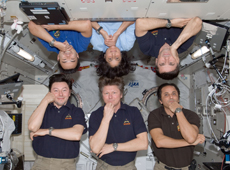
Astronaut Akihiko Hoshide and the rest of the ISS Expedition 32 crew. Teamwork is the most important thing. (courtesy: JAXA/NASA)
Competency and expertise are important, but I think what’s even more important is being good at teamwork. And not just with other astronauts, but having a cooperative attitude towards the many other people involved, such as the ground controllers who assist in their work and the manufacturers that support them. I believe that’s the most important factor for a successful mission.
In addition, every minute of a spacewalk is planned out, so they need to be able to think for themselves about the time allocated, and proceed with the work with the entire mission in mind. We call this “situation awareness.” For example, before they do something, they have to think several steps ahead, and always be aware of precisely what they’re doing and how they should be moving. In other words, they always have to anticipate what comes next.
It is said that Japanese astronauts rank third in total spacewalk time behind the Americans and the Russians.
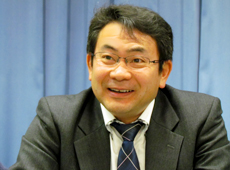
But we only have three Japanese with EVA experience. Even compared to space agencies outside the United States and Russia, Japan has the fewest number of people. The goal for the next-generation advanced spacesuit JAXA is developing is to use it on the Moon. Although the environment on the Moon will be quite different, I think it would help if the people who go have EVA experience or at least can be guided by people with such experience. And indeed, I think we need to have as many people with EVA experience as possible for manned exploration of other planets in the future.
What are your expectations for future Japanese astronauts? And how would you like to support them?
I think that all astronauts gain all sorts of knowledge from their experience in space. I think it’s important for them to tell people on the ground about it clearly and in their own words. I would like astronauts on future space missions to always be thinking about new possibilities for utilizing the space environment, and about possible new uses on the ground for the knowledge they acquire. In terms of support, I believe we need to do our best to create an environment that makes it easy for them to talk about this.
In addition, I think the time will absolutely come when we have manned exploration of other planets. EVAs will be absolutely necessary for exploring other planets and building space bases. In order to prepare for the age of space exploration, I’d like many Japanese astronauts to gain EVA knowledge and experience, so they can have a hand in shaping that new age. And I’d like us to provide our full support, so that the Japanese people will feel a stronger connection with space!
Associate Senior Engineer, Astronaut Operations Support Group, Flight Crew Operations and Technology Department, JEM Mission Operations and Integration Center, Human Space Systems and Utilization Mission Directorate, JAXA
Go for Space!
A Mini Spaceship for One
Building a Good-Looking Spacesuit
Building a Better Spacesuit with Medicine
